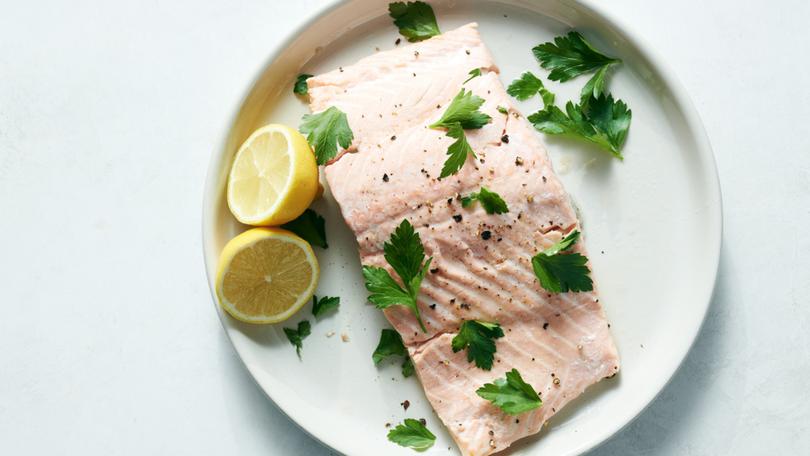The New York Times: The most foolproof way to cook fish? The microwave.

Gary Weinstein, a retired lawyer, has lived in Manhattan for 30 years, and for most of that time, he has used his oven for storage. “It stares at me with mockery,” he said, gesturing to the forsaken pans inside.
His relationship with his microwave, however, is far more collegial. Weinstein relies on it to cook fresh food, particularly fish, for himself and his girlfriend. “I never really learned how to cook,” he said, “but I got where I could whip up a decent ginger flounder with snow peas, steamed salmon with leeks, and even a mushroom risotto.” Yes, he does all that in the microwave.
Sign up to The Nightly's newsletters.
Get the first look at the digital newspaper, curated daily stories and breaking headlines delivered to your inbox.
By continuing you agree to our Terms and Privacy Policy.Since its introduction for private use as the “science oven” in 1967, the microwave has become nearly ubiquitous. More than 90% of American households now own one. And while it has been long relegated to reheating leftovers and making popcorn, it is undeniably the most unsung method of cooking fresh fish, particularly salmon. After a gentle learning curve, it is foolproof. Add salmon, water and salt to a microwave-safe dish, cover, cook for 3 or 4 minutes and let it rest for the same amount of time. What emerges are buttery flaky fillets, rich in flavour, that require no oil or messy cleanup, at the touch of a few buttons.
The best part? From start to finish, it takes about 10 minutes. You can even swap water for wine or stock, or throw spices or aromatics into the liquid to give the fish restaurant-quality seasonings without adding any time to the cooking process.
Microwaves are well suited to cooking fish because fish’s natural water content absorbs the appliance’s electromagnetic waves. Unlike conventional oven heat, which increases the air temperature surrounding the food, a microwave keeps the air cool and generates heat in the food through vibrations of water molecules. Because this internal agitation evaporates water, covering the food with a lid is essential for preserving moisture.
The presence of liquid is important to microwave cooking, said Ashim Datta, an engineering professor at Cornell University who has studied microwaves for more than 40 years. “The microwave is perfect for boiled food.”
Stephanie Pass, founder of the food blog Just Microwave It, often makes salmon in the microwave, then turns it into a salad that she tucks into croissants. When she brings them to parties, guests devour them. “Everyone thinks they are so fancy,” she said. When they ask for the recipe, “they are shocked and always tell me they never would have thought to make fish in the microwave.”
When a nine-month gas leak repair in my apartment building rendered the stove useless, I started poaching salmon in the microwave. At first, it seemed very Wonka to throw this not inexpensive, potentially intimidating ingredient in a water-filled dish and expect culinary enchantment with the press of a button. The results, however, were indeed magical: splendidly pink with flakes of fish that fell like dominoes.
For those short on time or new to the kitchen, a microwave is like a reliable friend who is always up for a new adventure. For experienced cooks, that same friend just wants to see you more.
RECIPE
Microwave Salmon
By Kevin Noble Maillard
This easy approach to poached salmon turns out buttery, flawless fish. The trick to getting domino-fall flakes of salmon? Microwave it in a simple saltwater solution at full power and let it rest for an equal amount of time before serving. The water both seasons the fish and helps it cook evenly. You can add a teaspoon of sugar or syrup to the saltwater to add a subtle sweetness, and aromatics, such as rosemary or dill to create additional layers of flavor. If you have time, you can brine the salmon as long as overnight in the refrigerator, which helps reduce the albumin (the harmless white protein that gathers on the surface of the fish during cooking). Most microwaves range in power levels from 600 to 1200 watts. This formula was developed in a 1000-watt microwave that boils one cup of cold tap water in 2 minutes. Cooking speeds on microwaves vary, even among those with the same wattage, so this recipe calls for checking your fillet early to avoid overcooking.
Yield: 2 servings
Total time: 15 minutes
Ingredients:
2 cups lukewarm water
2 teaspoons fine or coarse sea salt
1 (12-ounce) salmon fillet, preferably skin on and 1 1/2 inches thick (see tips)
Preparation:
1. Fill a microwave-safe dish that can hold the salmon snugly with the water. Add the salt and stir to dissolve. Add the salmon, skin side down, and baste by spooning the saltwater over it. The top of the fillet should stick out of the saltwater (see Tip). Loosely cover with a microwave-safe lid or plate.
2. Microwave the salmon at full power (high) for 3 minutes. Check for doneness by inserting a sharp paring knife into the center of the fillet. If it slides in easily without resistance, the salmon is done. It should take about 4 minutes for medium-rare doneness and about 5 minutes for medium, but the time may vary because every microwave cooks differently.
3. Let the fish sit, still covered in the dish, for 4 to 5 minutes. Remove from the water and serve.
Tips:
This formula was designed for farm-raised Atlantic salmon, which has a high fat content. For wild varieties, which are leaner and less thick, reduce cooking and resting times by half.
The salmon should be surrounded by but not submerged in the water. If the dish is larger, add more saltwater as needed, dissolving 1 teaspoon salt in each additional cup of lukewarm water.
This article originally appeared in The New York Times.
© 2024 The New York Times Company
Originally published on The New York Times
